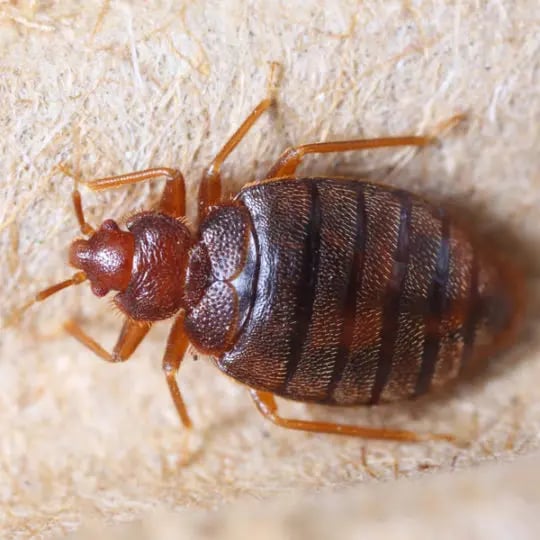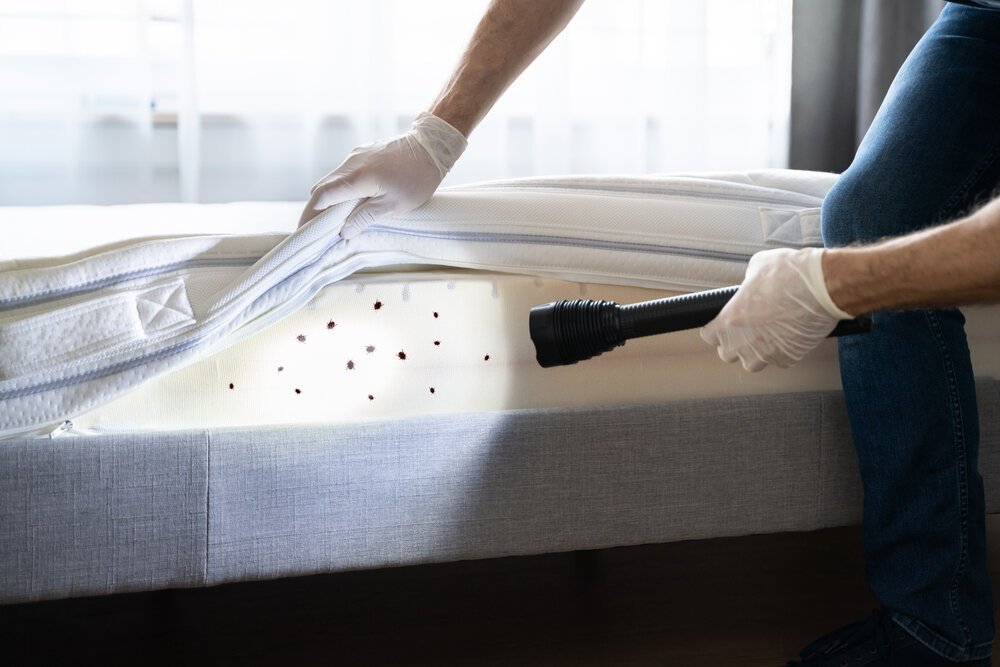Exploring the Science Behind Bed Bug Warmth Treatments as a Sustainable Insect Management Approach
One such method that has gained grip in current years is the usage of warmth treatments to combat bed insect problems. The intricacies of how warm properly eliminates bed pests and the broader implications for lasting insect management practices make this a topic worth exploring further.
Bed Bug Warm Therapy Refine

Thermal Fatality Point for Bed Pests
Subjecting bed bugs to raised temperatures past their thermal tolerance array is important for achieving reliable elimination in heat treatment procedures. The thermal death factor for bed bugs describes the temperature at which these bugs can not survive. Research study shows that bed insects begin to perish when subjected to temperature levels above 113 ° F(45 ° C) for a sustained period. As the temperature increases, so does the death price of bed pests. At around 118 ° F(48 ° C ), bed bugs start to die swiftly, with a death price of almost 99% within minutes of exposure. This demonstrates the level of sensitivity of bed pests to heats and highlights the efficiency of warmth treatments in removing infestations. By reaching and preserving temperatures above the thermal fatality point for bed pests, bug monitoring specialists can guarantee comprehensive elimination of bed pest populations, consisting of hard-to-reach areas where chemical treatments may be much less effective. Comprehending the thermal fatality factor for bed bugs is essential for executing effective heat therapy strategies and attaining lasting pest administration results.
Advantages of Heat Treatments
Having actually developed the important thermal death point for bed pests, it is imperative to currently check out the significant benefits that warm treatments offer in properly getting rid of these durable insects. When contrasted to conventional chemical approaches, warm treatments existing several crucial benefits. Among the main benefits is that warm can penetrate deep right into cracks and holes where bed bugs conceal, guaranteeing that also the most hard-to-reach areas are warmed to lethal temperature levels. This extensive strategy not only eliminates live insects but likewise targets bed pest eggs, stopping future problems.
Additionally, warmth therapies are non-toxic and environmentally friendly, making them a lasting pest management method. Unlike chemical pesticides, heat treatments go right here do not leave dangerous deposits that can pose risks to human health or the atmosphere. This element is especially crucial in delicate atmospheres such as health centers, colleges, and houses where chemical use may not be preferable.
In addition, warmth therapies have a high success price in removing bed pest problems in a solitary treatment, decreasing the requirement for several check outs and reducing interruption to residents. This efficiency not only conserves time and cash yet likewise offers assurance to those dealing with bed bug troubles.
Performance of Warm Treatment

Study research studies have constantly shown the efficiency of warm treatments in attaining a high rate of bed insect mortality. Effectively carried out warmth treatments can reach all the holes and splits where bed insects might be nurturing, making certain a thorough technique to extermination. Furthermore, warm therapies have the added advantage of killing bed pest eggs, which are typically immune to traditional chemical therapies. Generally, the efficiency of warmth treatments in getting rid of bed bug infestations makes them a reputable and sustainable parasite management method.
Sustainable Pest Management Conveniences
Carrying out sustainable parasite administration practices offers long-term advantages for both the environment and public health. By making use of techniques such as warmth treatments for parasite control, we can reduce the dependence on harmful chemical pesticides that can have unfavorable effects on ecosystems and human health and wellness - exterminator. Lasting insect monitoring methods aid in protecting biodiversity by targeting certain insects without hurting non-target microorganisms, thereby keeping a balanced community
Additionally, sustainable pest monitoring methods add to the total health and health of the general public. By minimizing exposure to harmful chemicals utilized in standard pest control approaches, heat therapies give a more secure option for parasite monitoring in property, business, and public spaces. This decrease in chemical use likewise assists in preventing chemical deposits from contaminating water, soil, and air, guarding ecological top quality.
Conclusion
To conclude, bed pest heat therapies have been my company revealed to be a sustainable and reliable bug administration strategy. The thermal death factor for bed pests makes them susceptible to warm therapies, which have countless advantages over conventional chemical treatments. The efficiency of warmth therapies in eliminating bed bug infestations while reducing ecological effect highlights the possibility of this approach as a lasting solution for pest control.
The bed bug warm treatment process includes increasing the temperature level within ravaged locations to a degree that properly eliminates bed pests and their eggs. By reaching and maintaining temperatures over the thermal death factor for bed insects, insect administration professionals can guarantee redirected here extensive elimination of bed insect populaces, including hard-to-reach areas where chemical therapies may be less effective. One of the primary benefits is that warmth can pass through deep right into splits and gaps where bed bugs hide, ensuring that also the most hard-to-reach locations are heated up to deadly temperatures. Unlike chemical treatments that might leave behind immune populations, heat therapies supply a environmentally pleasant and safe service that can penetrate deep right into furnishings, walls, and other hard-to-reach locations where bed insects hide.
The thermal fatality point for bed bugs makes them vulnerable to heat therapies, which have many advantages over standard chemical treatments.